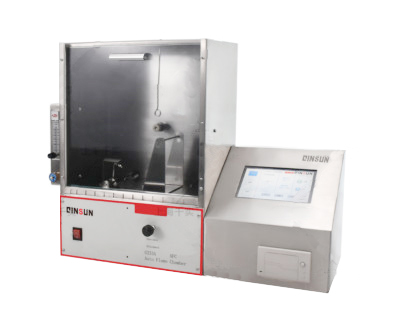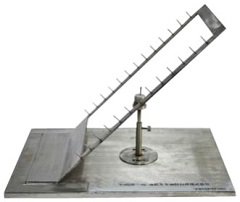45 degrees burning tester for fabric flame retardancy test in the common instrument, used to test the burning performance of pajamas or decorative fabrics, sealed stainless steel combustion chamber, observation window and standard burner, can accurately test the flame spread rate, suitable for plastic and non-metallic material specimens horizontal or vertical direction of the burning performance of the laboratory determination method.
For 500W flame burning test, according to the provisions of UL94, it is divided into the flammability test of strip specimens and board line specimens of the flame-resistance through the ability to test.
1. Strip specimen burning test vertical specimen
Specimen size (125mm ± 5mm) × (13mm_-4-0.5ram) × thickness (usually the required smaller thickness, thicker can not exceed t3mm).
The ring-shaped specimen holder clamps the specimen at 6mm, and a cotton pad with an area of 50mm×50mm is placed horizontally under the specimen, and the distance between the lower end of the specimen and the cotton pad is 300mm±10mm, and the angle between the axis of this Bunsen burner lamp and the vertical direction is 20±5° degrees, and the flame burning is applied to the specimen five times for 5s±0.1s each time with an interval of 5s±0.1s. According to the provisions of GB / T, if in the course of the test, the strip test sample has dripping matter, curling and elongation, the position of the torch should be adjusted so that the cone term of the blue cone flame center just touches the remaining part of the sample, which requires the ability to move the Bunsen burner in the vertical plane without affecting the internal environment of the test chamber in the course of the experiment. The torch should be removed immediately after each application of the flame to avoid affecting the renewal of the sample's ignition.
ps: (WLJCDM809)
https://www.testerinlab.com/products/Flammability_test/138.html
https://www.qinsun-lab.com/1121.html


评论
发表评论